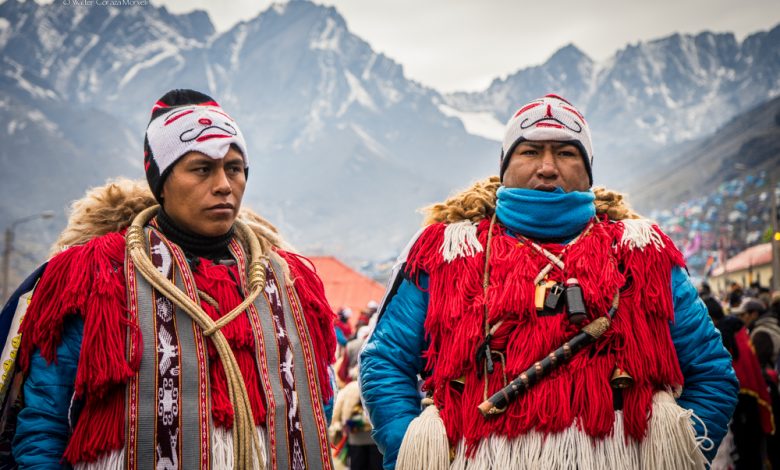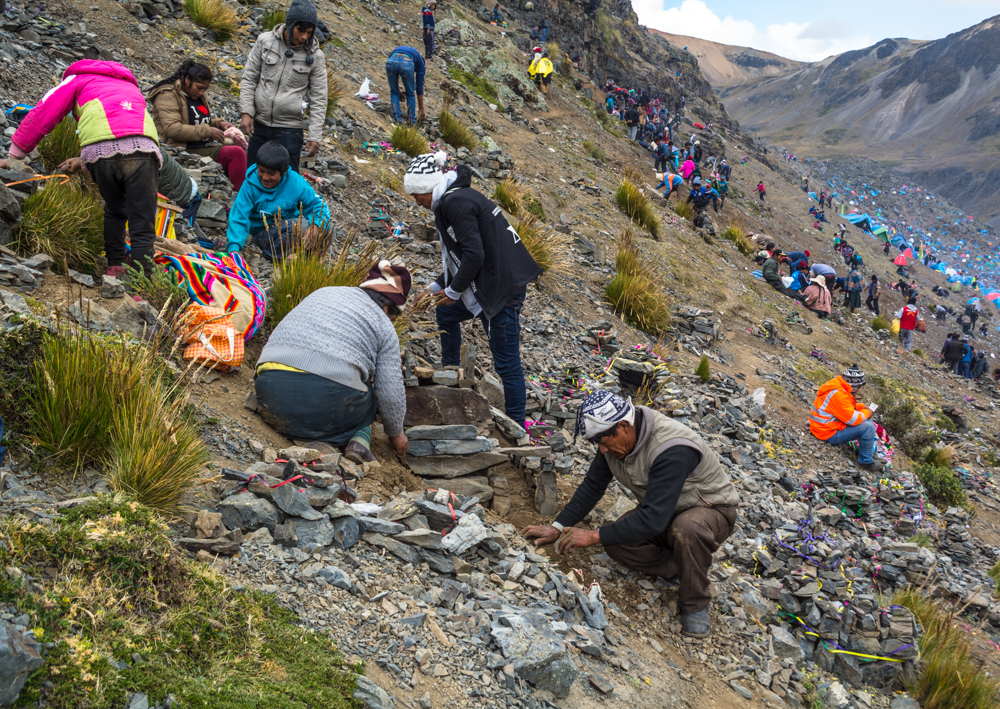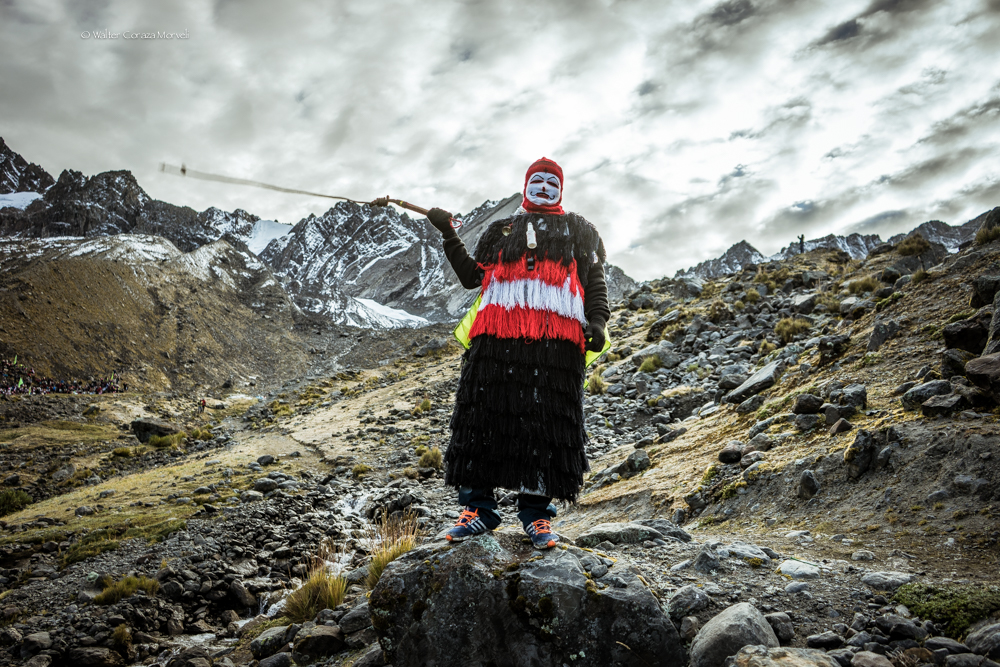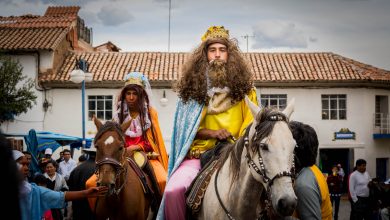
Play, like winds whistling around a glacial peak or two boys rolling in the snow or even on grass, seems important for understanding the great pilgrimage of Qoyllur Rit’i whose central day is today.
This pilgrimage draws pilgrims from all over the southern Peruvian Andean region and even from many counties. It is organized around people who come in established groups, such as dance troupes, nations (cities, communities), as well as those who come in different groups such as tour groups. It also has the hermandad, the fraternity overseen by the Jesuits that keeps control over events. Then there are the numerous individuals, families of pilgrims and merchants who make their way up to the shrine.
It is a confusing array of activities and movements which defy an analysts ability to bring into a single frame just as it defies the ability of the Jesuits and the brotherhood to bring it under organized control. It is a myriad.
But within that myriad one sees movement and paths, like the trail up and down, the ritual paths known as ñan.
One of those movements and paths is the idea of play. Carnival, the great time of heightened growth and fertility is known in Quechua as puqllay which is generally paired with the Spanish juego, or jugar. In the city of Cusco, it is a time when boys and girls struggle with each other in an open war of buckets of water, filled balloons, and squirt guns, or adults dancing in couples around a tree laden with gifts until one of them fells it with a hatched blow.


In Qoyllur Rit’i, it is said that the two heroes of the sacred origin myth of the place that fits in a Saint’s story, as do many Andean origin accounts, is of two boys playing up on the mountain. They are different, though they are both boys. One is human although removed by his tasks, herding, from humanity and is a person who has not yet gone through puberty or become an adult. The other is an earth being, a representation of the mountain that stretches between earth and sky and its powers.
This tale is like the Amazonian tales of an uninitiated boy who is taken in by the powers of the earth, in this case a similar uninitiated boy. An analogy of similarity is built in the tale between these two very different realities, the human and that of the mountain with its glimmering glacier that is like a star in the sky.
It is also like the many tales where a star comes down from heaven and gives people food, or like when fox goes to heaven and eats the banquet until ready to burst which he does on his way down and gives humanity food.

The coming together in play of the mountain and the boy seems to me the key of Qoyllur Rit’i, and the central path of its movement.
It is often said that the two boys danced in the highlands all alone a dance that some of the nations do today, the wayri ch’unchu. Highlanders representing the lowlanders are the base of the dances called ch’unchu it its different forms. The idea of lowlanders on the highland passes of in between zones—i.e. in between the Amazon and the high mountain Ausangate, is an idea represented in another play, struggle, between two deities in the Huarochiri narratives. In those, one vanquishes the other and sends him to occupy the lowlands while guarding the passes to keep him from returning.
This picks up a similar theme from Qoyllur Rit’i of the Ukukus vanquishing the Machulas, or the condenados, on the glacier year after year. While the conquered are not from the lowlands, they are from the world of the dead, a place closely associated with the lowlands in the Huarochiri tales and elsewhere.

While play, and struggle, are important in many of the dances in Qoyllur Rit’i, they are also recreated in an esplanade where people come to play at having what they wish. Many complain that this ritual, which is often called alasitas, does not belong in Qoyllur Rit’i because it is an altiplano tradition more appropriate to Copacabana, nevertheless it is very important for people seeking wellbeing and fertility in a capitalist economy and not that of the rural villages or small towns in which Qoyllur Rit’i came together not long ago according to researchers.
People obtain, either through purchase or as gifts, miniatures of things they wish to have whether statuses, material goods, or experiences. They have these blessed and then spend time playing at having them. All of this struggle to obtain position and well being in a capitalist market also figures in the idea of puqllay.
As a result, the story of the two boys playing near the glacier governs even their activities. Though key, you will not find the boys at play in the visual representations of Qoyllur Rit’i. Those are dominated by the image of the mature Christ on the Cross. The image was painted on the rock, into which the two boys entered ,near the middle of the last century. The painting is part of elites attempting to bring the pilgrimage under their control, even though that image also escapes control frequently.
`
Nevertheless, it is hard to understand that image of the Crucified Jesus and his relationship to the dances and the play ground by Qollquepunku, the silver gate, without knowing the idea of the two boys at play.
Today is the central day of the feast at Qoyllur Rit’i. Pilgrims are returning already and by Thursday the dance troupes from Cusco City will be back dancing around the plaza. The bring the fertility of the two boys playing to the city of Cusco at this time when rains transform in the sunny days and cold nights and the Body of Christ, represented in the Holy Host, processes around the city’s plaza in an ominous and promising multiplicity of sound and activity almost beyond imagining. The winds of rain becomes the dry winds of August when the earth rests and opens.




